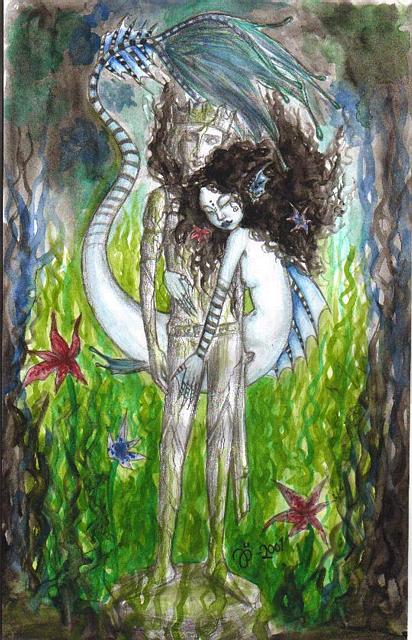| Performing
the SExual Heroine: the Costs and Pleasures of The Little Mermaid |
| Elizabeth
Ridgeway |
In Disney’s film
The Little Mermaid, the heroine Ariel must choose between voice and
access: to enter the ‘human world’ she must give up her agency of expression,
her ability to speak. The limitations of The plot of the film reflects childhood
interests and concerns while it responds to the needs of marketing and
big business by upholding adult norms and luring adult audiences. The
Little Mermaid stands at the intersection of childhood and adulthood,
both thematically and mechanically as a blockbuster children’s film.
The innocent encounter corruption, both in the story and in the movie
theatre, and adults create and criticize something meant for and about
children. In this paper I pursue a coherent theoretical Beyond the questions of the text itself, the question of contextual reception and interpretation of the story reveals a plurality of possibly negotiations of the sexuality represented in the film. Just as the story explores the costs and pleasures of accessing an imperfect but desirable world, this paper investigates a diversity of receptions of the little mermaid story. The possibility of feminine resistance defines Ariel’s story, and it also marks several approaches to the film itself. The impact of a film must be defined by the viewers themselves, and as such viewership can be an act of rebellion and an appropriation of ideas and materials .Little girls can try on new sexual personae in their observation and emulation of a strong willed and sensual teenage girl, writ large on the cinematic screen. On another level, viewers can play with an understanding of the film as a (perhaps unintentional) satirical critique of male culture; a drag performance emphasizing the ridiculous necessity of body language for a woman struggling to survive in a man’s world. Beyond the film itself, resistant and irreverent assimilations of the mermaid icon itself react to and diverge from The Little Mermaid’s depiction of the fishy feminine. Through presentation and analysis of viewer reception, I argue that the film’s knotty sexuality presents rich possibilities beyond a simplistic condemnation of its oft-cited anti-woman aspects. |
 contemporary
representation bind girl viewers in a similar position, locating them
in a cultural world upon which they cannot act. A cinematic heroine
like Ariel reaches her target demographic only through the lens of a
movie created, distributed and moralized by corporate, adult, America.
The complicated and problematic depiction of sexuality in the film calls
for an analysis of the motivations and expressions of the misogyny and
stereotypes seeded throughout the story and visited upon its girl viewers.
contemporary
representation bind girl viewers in a similar position, locating them
in a cultural world upon which they cannot act. A cinematic heroine
like Ariel reaches her target demographic only through the lens of a
movie created, distributed and moralized by corporate, adult, America.
The complicated and problematic depiction of sexuality in the film calls
for an analysis of the motivations and expressions of the misogyny and
stereotypes seeded throughout the story and visited upon its girl viewers. insight
into how the complex desires of the audience interface with the presentation
of young female sexuality in The Little Mermaid.
insight
into how the complex desires of the audience interface with the presentation
of young female sexuality in The Little Mermaid.